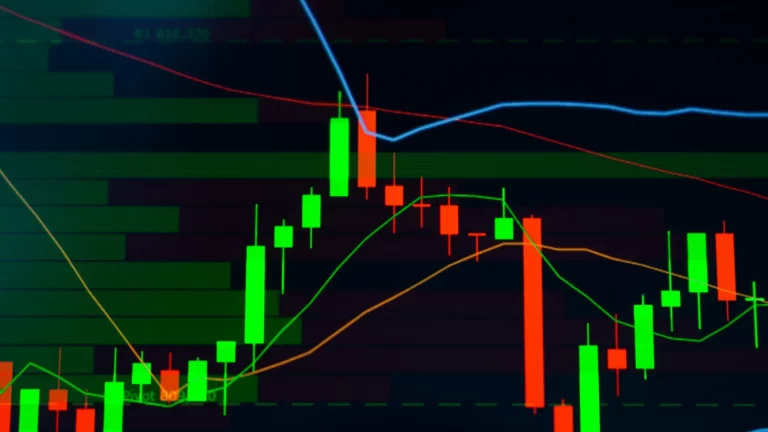Mastering Cross-Chain Crypto Trading: Essential Tools and Techniques

As the cryptocurrency ecosystem evolves, the importance of cross-chain trading and interoperability has become increasingly evident. Cross-chain trading allows for the exchange of assets across different blockchain networks, while interoperability ensures these networks can communicate and interact seamlessly. This article delves into the tools and strategies that enable efficient cross-chain trading and enhance interoperability in the decentralized finance (DeFi) landscape.
Understanding Cross-Chain Trading
Cross-chain trading involves transferring assets from one blockchain network to another. This capability is essential for traders looking to diversify their portfolios and leverage opportunities across multiple blockchain ecosystems. An example of a best-in-class cross-chain trading platform is DLN (deSwap Liquidity Network). Check out the complete review here.
Benefits of Cross-Chain Trading:
- Increased Liquidity: Access to a broader range of assets and liquidity pools.
- Diversification: The ability to invest in different blockchain projects and ecosystems.
- Arbitrage Opportunities: Taking advantage of price discrepancies between different blockchains.
Tools for Cross-Chain Trading
Several tools and technologies have been developed to facilitate cross-chain trading and enhance interoperability:
Atomic Swaps: Atomic swaps enable peer-to-peer trading of cryptocurrencies between different blockchains without the need for a trusted third party. They use smart contracts to ensure that the swap occurs simultaneously on both chains, reducing counterparty risk.
Example: A trader can swap Bitcoin (BTC) for Ethereum (ETH) directly using atomic swap protocols like Komodo or AtomicDEX.
Cross-Chain Bridges: Cross-chain bridges connect two or more blockchain networks, allowing assets to be transferred between them. These bridges often lock assets on the source chain and mint equivalent tokens on the destination chain.
Example: The Binance Smart Chain (BSC) bridge allows users to transfer assets between BSC and Ethereum, providing access to DeFi applications on both networks.
Interoperability Protocols: Interoperability protocols, such as Polkadot, Cosmos, and deBridge, are designed to facilitate communication and interaction between different blockchains. These protocols enable the transfer of data and assets across chains, creating a more connected and efficient blockchain ecosystem. Check out the complete guide deBridge.
Example: Polkadot’s relay chain allows multiple parachains to interoperate, enabling seamless asset transfers and cross-chain functionality.

Strategies for Effective Cross-Chain Trading
To navigate the complexities of cross-chain trading, traders can employ several strategies:
Research and Due Diligence: Before engaging in cross-chain trading, it is crucial to research the involved blockchain networks, their security measures, and the interoperability tools they support. Understanding the risks and benefits of each network can help traders make informed decisions.
Diversification: Diversifying investments across multiple blockchains can reduce risk and increase exposure to various opportunities. By holding assets on different networks, traders can leverage the unique features and benefits of each ecosystem.
Leveraging Cross-Chain DEXs: Decentralized exchanges (DEXs) that support cross-chain trading, such as Thorchain and Sifchain, provide platforms for trading assets across different blockchains. These DEXs offer liquidity pools and trading pairs that span multiple networks, enhancing liquidity and trading opportunities.
Arbitrage: Arbitrage involves exploiting price differences for the same asset across different markets or blockchains. Cross-chain arbitrage can be lucrative but requires careful monitoring of prices and quick execution to capitalize on discrepancies.
Example: A trader notices that USDT is trading at a higher price on Binance Smart Chain than on Polygon. By transferring USDT from Polygon to BSC and selling it there, the trader can profit from the price difference.
Challenges and Considerations
While cross-chain trading and interoperability offer numerous advantages, they also present challenges and risks:
Security Risks: Cross-chain bridges and interoperability protocols can be vulnerable to hacks and exploits. It is essential to use well-audited and trusted platforms to mitigate these risks.
Transaction Fees: Transferring assets between different blockchains can incur high transaction fees, especially during periods of network congestion. Traders should consider these costs when planning cross-chain trades.
Complexity: Navigating multiple blockchain networks and using various tools can be complex and require a steep learning curve. It is crucial to stay informed about the latest developments and best practices in cross-chain trading.
Key Takeaways
Cross-chain trading and interoperability are critical components of the evolving DeFi landscape. By understanding the tools and strategies available, traders can effectively navigate the complexities of cross-chain trading and capitalize on the opportunities it presents. As the technology continues to advance, seamless interoperability will likely become the norm, further enhancing the efficiency and connectivity of the blockchain ecosystem. Traders who stay ahead of these developments will be well-positioned to benefit from the expanding possibilities in the crypto space.





